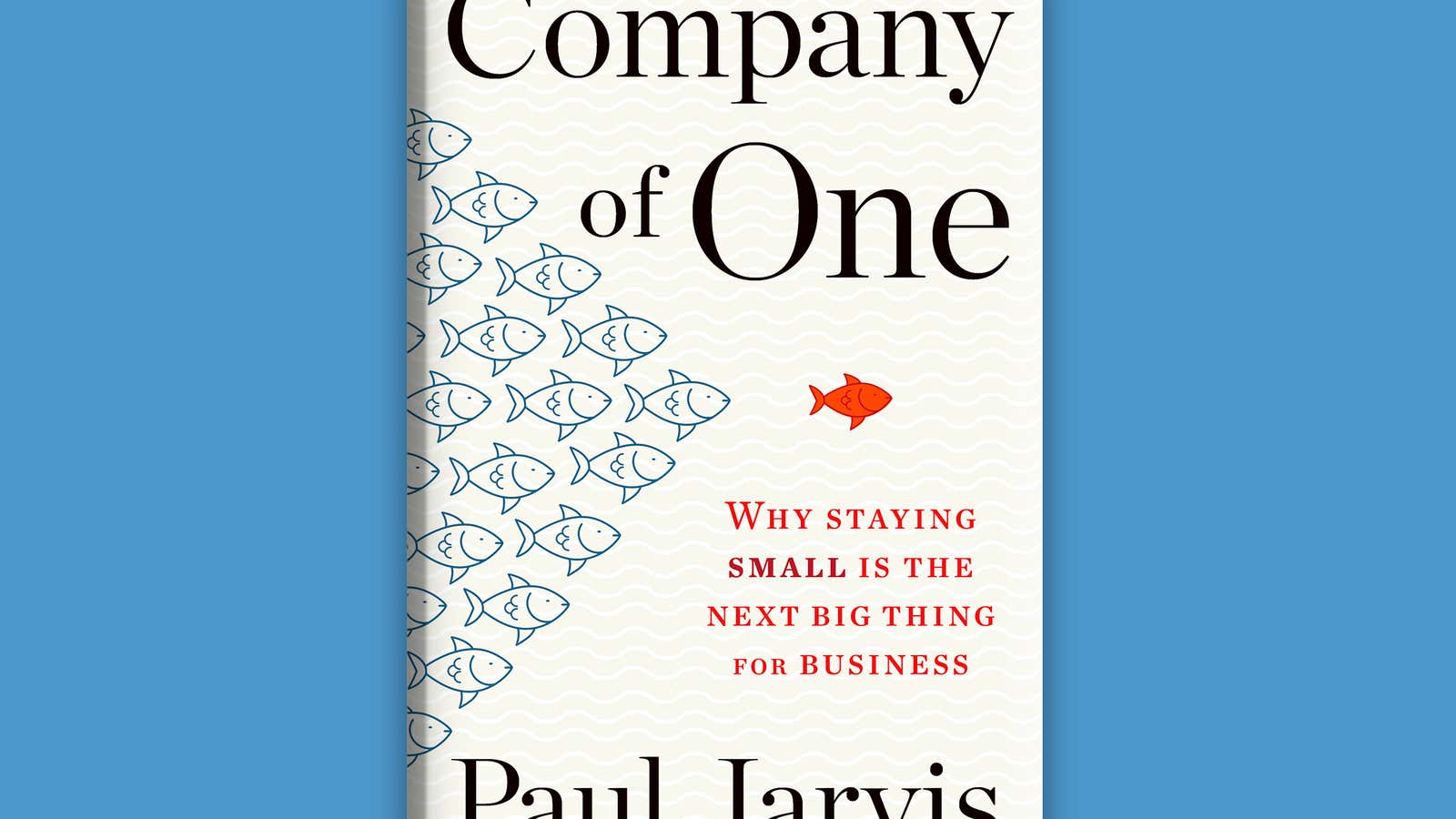Full title: Company of One: Why Staying Small is the Next Best Thing for Business
Number of pages: 272
Year first published: 2019
Who it’s for: People who want to quit their jobs and start their own businesses, and those who want to achieve more flexibility and freedom in their current workplace.
The big idea: Writer, designer, and teacher Paul Jarvis shares how he quit his job at a design agency to strike it out on his own and ended up achieving tremendous success not by growing his company, but by staying small. Common marketing theories tell business owners to “always be growing.” But this can actually be counter-productive. As companies grow, they become more complex to manage, finance, and operate. Jarvis argues that it’s possible to make a good income, set your own hours, and work as much as necessary—but avoid burnout, what he calls churn, or losing clients.
Here’s how Jarvis defines a company of one: “It’s a blueprint for growing a lean and agile business that can survive every type of economic climate and ultimately it leads to richer and more meaningful life.”
Things worth learning:
- Think better, not bigger: Entrepreneurs, business owners, and employees should think about quality, not quantity. Companies with fewer clients can provide better service because they’re small enough to adapt to changes in the market and are unconstrained by management, boards, or investors, which means they are more flexible and can respond to their customers’ needs faster.
- What have you got now? When someone has an idea for a business, they’re usually told to first find investors and have everything ready to go before they launch. That sounds like reasonable advice, but in reality, it’s a distraction from actually starting the business. The more important thing to ask is: what can I use now?If you have an Internet connection, you can set up a rudimentary website and tweak it later. Sometimes, all it takes is a newsletter or a small Facebook page.You don’t need everything to be perfect, and you don’t need a variety of products to get started. Launch just one, then add more later as needed.
- What is the maximum you want to achieve? It would be intuitive to set the minimum number of clients you want to reach or the least amount of money you want to make every month. But you should also think about your maximum number. Remember, more clients mean more work, which means you’ll need to hire people or work more hours. Maybe that’s something you don’t want to do because it could lead to unnecessary complexity in your business. Instead, you can stay small but thriving.
- Being a company of one doesn’t mean being alone. Being a freelancer or solo entrepreneur often looks like this: the writer, designer, or photographer is working alone, most often from home. But the truth is that we all need someone to help us succeed. There are some things we can’t do on our own, whether it’s doing taxes, designing our website, or writing our copy. And that’s when we hire people who possess the very skills we don’t. The lonely freelancer is a very persuasive myth but it is definitely a myth.
- Companies of one are not just for freelancers and solo entrepreneurs. While being a company of one seems perfect for freelancers and solo entrepreneurs, you can also achieve it as part of a team at a bigger company. Jarvis admits that working together with a group of people can be beneficial, as it provides the security many freelancers are missing. But at many companies, there is too much supervision and expectation of face time, even if the work itself takes much less time. But it is possible to be a company of one within a bigger company. It means choosing your own hours and tasks and retaining the right to switch off when outside of work.
Quote it: “Staying small doesn’t have to be a stepping-stone to something else, or the result of a business failure—rather, it can be an end goal or a smart long-term strategy.”
Read, skim, or skip? While the advice is helpful, it’s also often obvious. Skim.
